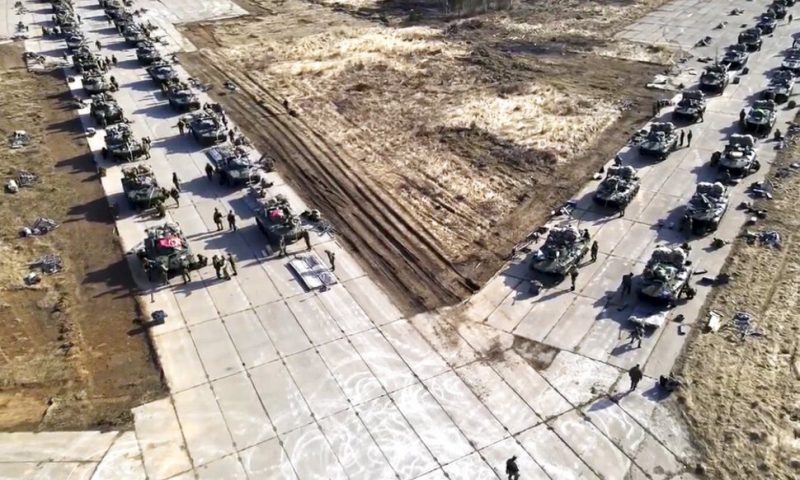Though Defense Minister Sergei Shoigu said all temporarily deployed troops would withdraw by May 1, Ukraine has observed that some of these forces were relocated permanently.
Russia’s defense minister on Thursday announced the withdrawal of most of the troops it has massed on its border with Ukraine in recent weeks, easing a potential crisis even as military threats against its former Soviet partner remain.
“I believe that the objectives of the surprise check have been fully achieved. The troops have demonstrated the ability to ensure reliable defense of the country,” Sergei Shoigu said during an unannounced trip to visit the front-line troops, according to a translation of his remarks. Russia has maintained that the deployment to the border of 120,000 troops – according to Ukraine’s estimate – has always served as a military exercise and a response to ongoing, massive NATO exercises elsewhere in Europe.
Russia’s commanders will begin planning the withdrawal by April 23, to be completed by May 1, Shoigu said.
It was not immediately clear how Shoigu’s order would, in fact, affect the provocative situation along the border as his orders on Thursday apply only to troops that have been temporarily stationed. Ukrainian Foreign Minister Dmytro Kuleba told reporters earlier this week that the Russian deployment includes the permanent relocation of large formations of troops to Crimea, including a regiment of paratroopers.
“We cannot know for sure whether Moscow will begin to decide a new stage of aggression against Ukraine, but it is certain that they will be prepared, all ready to do so in the coming weeks,” Kuleba said during a virtual news conference with reporters. He also noted the relocation of shallow-water Russian warships from the Caspian Sea to the Black Sea – a strategically critical international waterway Moscow has previously sought to control.
Indeed, as a part of his announcement Thursday, Shoigu said military equipment and weapons will remain at training grounds near Ukraine’s eastern border in anticipation of other planned Russian military exercises later this year.
Despite the lack of immediate details, Ukrainian leaders saw cause for some optimism on Thursday.
“The reduction of troops on our border proportionally reduces tension,” Ukrainian President Volodymyr Zelenskiy wrote on Twitter. “[Ukraine] is always vigilant, yet welcomes any steps to decrease the military presence & deescalate the situation in Donbas. Ukraine seeks peace. Grateful to international partners for their support.”
Zelenskiy on Wednesday invited Russian President Vladimir Putin to meet in the war-torn Donbas region of eastern Ukraine to discuss peace in the Russia-backed war there.
The Biden administration has withheld offering details on the size or apparent purpose of the massive Russian buildup. Pentagon spokesman John Kirby said earlier this week that the U.S. assesses that the total size of the force exceeded the buildup in advance of Russia’s 2014 incursion into Ukraine. Footage showing shipments of Russian tanks and military equipment streaming toward Ukraine has been widely shared on social media.
The European Union criticized the buildup earlier this week, estimating it involved more than 150,000 Russian troops.

